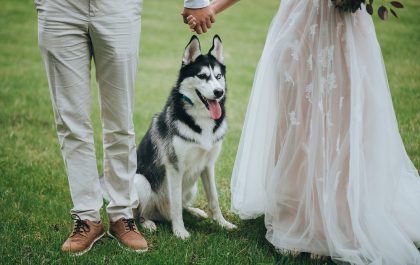Height: 1.3-1.4 meters
Weight: 330-380 kg
Coat colour: wide range of colours including chestnut, black, bay, grey and palomino
Life expectancy: 25-30 years
Diet: hay, grass, grains and supplements
Temperament: friendly, curious and intelligent
Uses: riding, showing, racing, and packing
Distinct features: thick mane and tail, two extra gaits (t’lt and pace)
Origin: Iceland
Population status: considered a rare breed with a population of around 80,000 worldwide
Are you looking to learn more about Icelandic Horse – Icelandic Pony? If so, you’ve come to the right place. This article will provide you with an introduction to the breed, its history, and its many wonderful qualities. Icelandic Horse – Icelandic Pony are a unique breed of pony that originates from Iceland, and they are known for their intelligence, strength, and agility. They are also known for their unique gait, which is called the tolt, and they are popular for riding and show competitions. Read on to learn more about this amazing breed of pony!
History and Origin of the Icelandic Horse
The Icelandic Horse is a breed of horse that has been around for centuries and is native to Iceland. The breed is known for its hardiness, strength, and intelligence. It is believed to have been brought to Iceland by the Vikings in the 9th century, and it has been bred in Iceland ever since.
The Icelandic Horse is a unique breed, with its own characteristics and traits. It is a small horse, standing between 13 and 14 hands high, and is known for its sure-footedness and agility. It has a double coat, which helps it to survive the harsh Icelandic climate. Its thick mane and tail help protect it from the cold, and its short legs make it well-suited to navigating the rugged terrain of Iceland. The breed is also known for its friendly and gentle temperament, making it a popular choice for riding and other activities.
Characteristics and Physical Appearance of the Icelandic Pony
The Icelandic Pony, also known as the Icelandic Horse, is a breed of pony that is native to Iceland. This breed is small but hardy, with a strong, muscular body and a thick coat of hair. The Icelandic Pony is well adapted to the harsh Icelandic climate, and is able to withstand cold temperatures and strong winds.
The Icelandic Pony is typically between 13 and 14 hands high, with a long, thick mane and tail, and a short, strong neck. Its coat is usually a solid colour, such as black, brown, gray, or bay, and its legs are often white or cream-coloured. The Icelandic Pony is known for its intelligence, strength, and sure-footedness, and is often used for riding, driving, and other equestrian activities. It is an incredibly versatile breed, and is also used for herding and packing.
Breeding and Genetics of Icelandic Horses
The Icelandic Horse, or Icelandic Pony, is a unique breed of horse that has been bred and developed in Iceland for centuries. They are known for their strong, hardy nature and for being incredibly versatile. They are also known for their unique coat colours and patterns, as well as their unique gait, the t’lt. Breeding and genetics play an important role in the development of this breed, and the Icelandic Horse is considered to be one of the oldest and purest breeds in the world.
The Icelandic Horse is a very hardy breed, and it is able to survive in harsh climates and conditions. This is due to careful and selective breeding over the centuries. Icelandic Horses are bred for their strength, agility, and endurance, and they are able to adapt to a variety of climates and conditions. They are also bred for their unique gait, the t’lt, which is a four-beat gait that is incredibly smooth and comfortable to ride. The Icelandic Horse is also known for its unique coat colours and patterns, which range from white to black, and even include duns, palominos, and pinto patterns.
Breeding and genetics are essential to the development and preservation of the Icelandic Horse. Breeders in Iceland are dedicated to maintaining the purity of the breed
Training and Riding Techniques for Icelandic Ponies
The Icelandic Pony, or Icelandic Horse, is a unique breed of horse that has been bred and raised in Iceland for centuries. This breed is known for its hardiness, agility, and intelligence, making it a great choice for riding and training. While Icelandic Ponies can be trained for a variety of disciplines, they are most commonly used for recreational riding and light work such as driving and light jumping.
When training and riding an Icelandic Pony, it is important to remember that they are a very intelligent breed and respond well to positive reinforcement. It is also important to use a light hand when riding, as Icelandic Ponies are sensitive to pressure and can easily become overwhelmed. The use of a snaffle bit is recommended, as Icelandic Ponies have a tendency to be strong and require a bit with a milder action. Additionally, Icelandic Ponies have a tendency to be very sure-footed, so it is important to keep them on well-maintained trails and paths. When riding an Icelandic Pony, it is important to take your time and be patient, as they can be easily spooked and require a gentle hand. With the right training and riding techniques, Icelandic Ponies can be a great addition to any stable.
Icelandic Horse Shows and Competitions
The Icelandic Horse, or Icelandic Pony, is a unique breed of horse that is native to Iceland. This breed is known for its hardiness, intelligence, and agility, making it an ideal mount for a variety of equestrian activities. One of the most popular activities for these horses is competing in Icelandic Horse Shows and Competitions.
Icelandic Horse Shows and Competitions are held throughout the year, and are open to riders of all ages and skill levels. These shows feature a wide variety of events, including dressage, show jumping, and t’lt, a unique gait that is exclusive to the Icelandic Horse. Riders compete for ribbons and prizes, and the events are often judged by experienced equine professionals. In addition to the competitive events, many shows also include exhibitions, demonstrations, and clinics to educate riders and spectators. These shows are a great way to showcase the unique abilities of the Icelandic Horse and Pony, and to encourage riders to work together and strive for excellence.
Cultural Significance of Icelandic Horses in Iceland
The Icelandic Horse, or Icelandic Pony, is a unique breed with a deep cultural significance in Iceland. The horses have been a part of the country’s culture for centuries, with references to them in Icelandic literature and folklore. They are even said to have been brought to Iceland by the first settlers in the 9th century.
Icelandic Horses are a source of pride for the Icelandic people, and they are celebrated in many ways. The annual horse festival in Hafnarfj’r’ur is a popular event, where riders dress in traditional costume and compete in traditional horse races. The horses are also used in traditional Icelandic sports such as G”ingakeppni, a type of horse show jumping. Icelanders also use the horses for leisure, with riding trails and horse-trekking tours popular with tourists and locals alike. The Icelandic Horse is also featured on the country’s coat of arms, as a symbol of the country’s proud equestrian culture.
Icelandic Horse Tourism and Riding Tours
Icelandic Horse Tourism and Riding Tours are a popular way to experience the beauty of Iceland and its unique breed of horse. The Icelandic Horse, also known as the Icelandic Pony, is a small, sturdy breed that is known for its sure-footedness and hardy nature. Icelandic Horse Tourism and Riding Tours offer visitors the chance to explore the stunning Icelandic landscape on horseback. Riders can enjoy a variety of activities, such as treks through lava fields and along the coast, or take part in a traditional Icelandic horse show.
Riding tours provide the opportunity to observe the Icelandic Horse in its natural environment, as well as to learn about its history and culture. Riders will be guided by experienced instructors who will show them the best routes and allow them to take part in activities such as herding sheep. Riders can also take part in traditional Icelandic games such as t’lt, a four-beat gait unique to the Icelandic Horse. Tours are available for all experience levels, from beginner to advanced riders.
Conservation Efforts to Protect the Icelandic Horse Breed.
The Icelandic horse, or Icelandic pony, is a unique breed of horse that is native to Iceland and has been bred there since the 9th century. This breed is known for its sturdy build, endurance, and gentle nature, making it an important part of Icelandic culture and folklore. In order to protect this ancient breed, conservation efforts have been established to ensure its survival.
One of the main efforts to protect the Icelandic horse is through the Icelandic Horse Registry. This registry was established in order to keep track of the breed’s lineage, and to ensure that only purebred Icelandic horses are bred. This registry also works to promote the Icelandic horse through education and awareness, and to ensure that the breed is protected from crossbreeding.
In addition to the Icelandic Horse Registry, there are also a number of conservation initiatives in Iceland that are dedicated to the protection of the Icelandic horse. These initiatives include the Icelandic Horse Association, which works to promote the breed and its conservation, and the Icelandic Horse Preservation Society, which works to protect the breed from extinction. These organizations work to ensure that the Icelandic horse is protected, and to ensure that its unique characteristics and history are preserved for generations to come.
Final Thoughts
The Icelandic Horse is an incredibly unique breed of pony with a long and rich history. It is known for its hardiness, intelligence, and agility, as well as its unique gait, the t’lt. It is a versatile breed, used for riding, driving, and show competitions. It is also used as a therapy horse for people with physical and mental disabilities. Breeding and genetics play an important role in the development of this breed, and conservation efforts are in place to ensure its continued existence. With its friendly temperament and great versatility, the Icelandic Horse is a great choice for anyone looking for a reliable and hardy horse.





